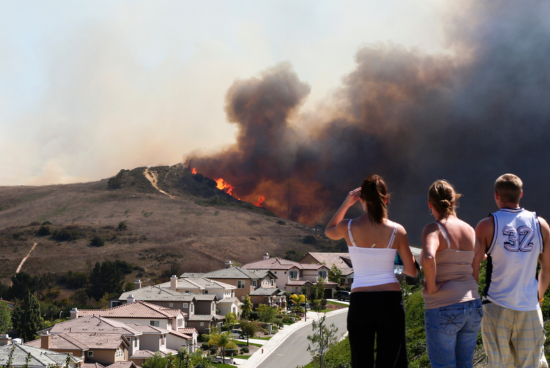Stay Informed. Stay Empowered.
Subscribe to the Best of Cal Coast for curated financial education and trusted thought leadership—delivered straight to your inbox.
Si continúas, abandonarás el sitio web de California Coast Credit Union. Ten en cuenta que no nos responsabilizamos por la exactitud, seguridad o contenido de otros sitios web. Te recomendamos revisar las políticas de privacidad y seguridad de todos los sitios web que visitas. California Coast Credit Union no garantiza ni se responsabiliza por ningún producto ni servicio externo obtenido a través de nuestro sitio web.
ContinuarEstamos aquí para ti
Si te ves afectado por el cierre del gobierno federal, Cal Coast Credit Union está aquí para ayudarte. Entendemos que este es un momento estresante y estamos comprometidos a ayudar en todo lo que podamos. Si tu sueldo o tus finanzas se ven afectados, comunícate con nosotros. Ofrecemos opciones de oferta de alivio y estamos listos para escuchar, responder preguntas y trabajar con usted en soluciones.
Utilizamos cookies para facilitar la navegación del sitio, analizar el uso del sitio y mejorar nuestras estrategias de comercialización, como se explica en nuestra política de privacidad. Al seleccionar "acepto", aceptas que se almacenen cookies en tu dispositivo.
Presentado por Cal Coast Credit Union en colaboración con Filene y HerMoney
19 de septiembre de 2025

Natural Disasters Can Strike Without Warning
When a natural disaster strikes-whether it's a wildfire, hurricane, flood, or earthquake-you're probably not going to be in the best frame of mind to make calm, rational decisions. That's why the smartest financial move you can make isn't waiting until the moment disaster hits. It's preparing well before it happens.
Because financially preparing for a natural disaster isn’t just about peace of mind — it’s about making sure you and your family can move quickly, recover faster, and avoid costly mistakes when time is of the essence.
Step One: Build Your Financial ‘Grab-and-Go’ Kit
If evacuation orders are issued, you might only have a few minutes to grab what you need. That's not the time to go rifling through your filing cabinet or digging in your closet for your Social Security card. Instead, gather copies of your essential documents now, and store them together in one safe place:
Here’s what to include:
All of these documents should be copied and stored in a sealable plastic bag or envelope and backed up digitally (in the cloud or on a thumb drive). You may also want to have copies handy on your phone, saved to your photo library, if you find yourself in a situation with little to no cellular reception or WiFi. The originals should be kept in a fireproof, waterproof safe-or even better, in a safe deposit box at your bank. The goal is to make sure you can prove who you are, what you own, and what you're owed.
What’s Most Important to Include?
If you're feeling overwhelmed, start with the items that would be the hardest to replace. Your birth certificate and Social Security card are two of the most critical-many other documents (like passports or vehicle titles) can't be reissued without them.
Don't forget about your digital trail, either. A smartphone video of your home's contents, stored in your Google Drive or cloud storage, can make a big difference when it comes to filing insurance claims. Open drawers. Look inside closets. Take pictures of receipts if you have them. This inventory will make it easier and faster to file a claim-and harder for insurers to question what you lost.
The same goes for scanning documents like medical records or tax files. Just keep in mind that in the immediate aftermath of a disaster, you might not have internet access-so having physical backups or storing files on a portable drive is essential.
Step Two: Review Your Homeowners Insurance
Natural disasters are expensive. If your house is damaged or destroyed, insurance may be your only financial safety net. But here's the thing: Not all policies are created equal. A standard homeowners policy may not fully cover the actual rebuilding cost of your home-or may exclude certain events like floods or earthquakes altogether.
So, take a moment to review your coverage:
Step Three: Create an Emergency Go Bag
Your finances aren't the only thing that needs to be ready. If you're forced to evacuate, you'll need a packed and portable bag with essentials to get you through at least a few days away from home.
What to include:
Include anything that makes you feel human and calm-maybe that means a favorite perfume, a scarf to cover unwashed hair, or a novel loaded on your Kindle. Comfort matters when the world feels like it's spinning.
Step Four: Prep Your Family
Here’s the part many people forget: Make sure someone else in your household (or a trusted friend) knows where to find your grab-and-go bag and financial kit.
In a crisis, everyone should know where to go, who to call, and what the plan is—because you may not have time to explain it later.
Conclusión
Natural disasters are scary, but they don't have to be financially devastating. The key is preparation. When you have your documents gathered, your insurance updated, and your bag packed, you're not just ready for the worst-you're protecting everything you've worked so hard to build.
¿Tienes preguntas? ¿Quieres más información? Nos complace contactarnos.
Prestando servicio a cualquier persona que viva o trabaje en los condados de San Diego, Riverside, Orange, Los Angeles, Ventura, Imperial o San Bernardino.
Número de ruta/ABA: 322281578
Nº DE IDENTIFICACIÓN NMLS 407951
